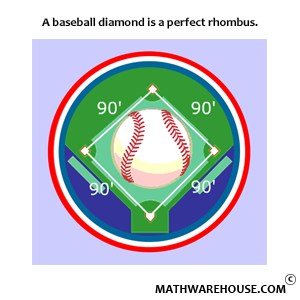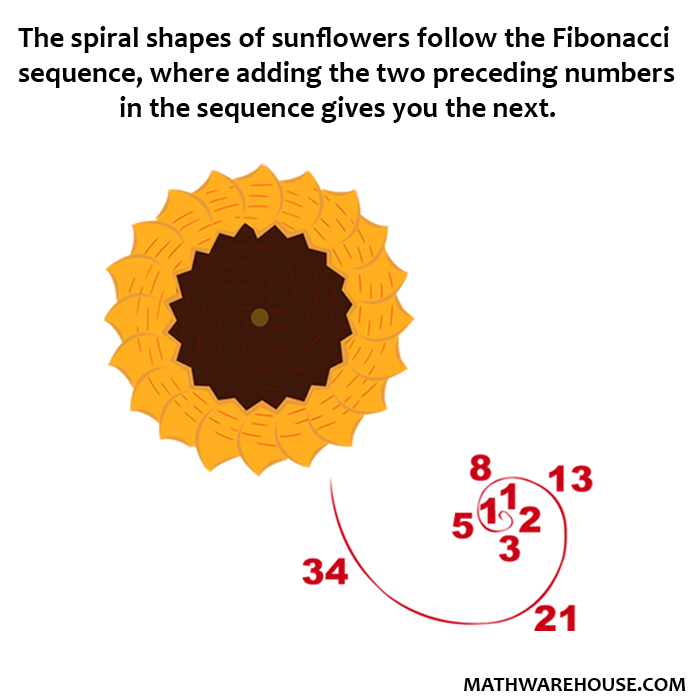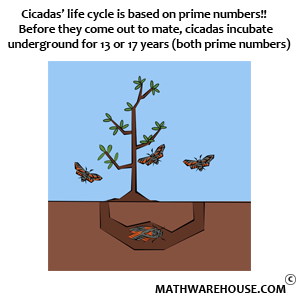Differentiate using the chain rule.
$$f'(x) = \cos(\blue{1-6x})\cdot \blue{(-6)} = -6\cos(1-6x)$$
$$f'(x) = -6\cos(1-6x)$$
Differentiate with the chain rule.
$$ f'(x) = 6\cos(\blue{4x^3})\cdot \blue{(12x^2)} = 72x^2\cos(4x^3) $$
$$f'(x) = 72x^2\cos(4x^3)$$
Rewrite the square-root with an exponent.
$$ f(x) = \tan(x^{1/2}) $$
Differentiate using the chain rule.
$$ f'(x) = \sec^2(\blue{x^{1/2}})\cdot \blue{\left(\frac 1 2 x^{-1/2}\right)} = \frac 1 2 x^{-1/2}\sec^2(x^{1/2}) $$
(Optional) Rewrite the derivative using radicals. Rationalize the denominator.
$$ \begin{align*} f'(x) & = \frac 1 2 x^{-1/2}\sec^2(x^{1/2})\\[6pt] & = \frac 1 {2x^{1/2}}\, \sec^2(\sqrt x)\\[6pt] & = \frac 1 {2\sqrt x}\, \sec^2(\sqrt x)\\[6pt] & = \frac{\sqrt x}{2x}\,\sec^2(\sqrt x)\\[6pt] & = \frac{\sqrt x\,\sec^2(\sqrt x)}{2x} \end{align*} $$
Evaluate $$f'\left(\frac 1 4\right)$$
$$ \begin{align*} f'\left(\frac 1 4\right) & = \frac{\sqrt{1/4}\,\sec^2(\sqrt{1/4})}{2(1/4)}\\[6pt] & = \frac{\frac 1 2\,\sec^2(1/2)}{1/2}\\[6pt] & = \sec^2(1/2)\\[6pt] & \approx 1.298 \end{align*} $$
$$ f'\left(\frac 1 4\right) = \sec^2(1/2) \approx 1.298 $$
Differentiate using the chain rule.
$$ f'(x) = 2\left(-\csc^2(\blue{7x^2+3x})\right)\cdot \blue{(14x + 3)} = -2(14x+3)\csc^2(7x^2+3x) $$
$$f'(x) = -2(14x+3)\csc^2(7x^2+3x)$$
Differentiate using the chain rule.
$$ f'(x) = \sec(\blue{\sin x})\tan(\blue{\sin x})\cdot \blue{\cos x} $$
$$f'(x) = \sec(\sin x)\tan(\sin x)\cdot \cos x$$
Rewrite the cosecant in terms of the sine.
$$ \frac d {dx}\left(\csc x\right) = \frac d {dx}\left(\frac 1 {\sin x}\right) = \frac d {dx}\left([\sin x]^{-1}\right) $$
Differentiate using the chain rule.
$$ \frac d {dx}\left([\sin x]^{-1}\right) = -1[\blue{\sin x}]^{-2}\cdot \blue{\cos x} = -\frac{\cos x}{\sin^2 x} $$
Simplify by separating into separate fractions and using trigonometric identities.
$$ \begin{align*} \frac d {dx}\left(\csc x\right) & = -\frac{\cos x}{\sin^2 x}\\[6pt] & = -\frac 1 {\sin x}\cdot \frac {\cos x}{\sin x}\\[6pt] & = -\csc x\cot x \end{align*} $$
$$ \displaystyle \frac d {dx}\left(\csc x\right) = -\csc x\cot x $$
Differentiate with the chain rule.
$$ f'(x) = e^{\blue{8x-4}}\cdot \blue{8} = 8e^{8x-4} $$
Evaluate $$f'(1/2)$$
$$ f'(1/2) = 8e^{8(1/2)-4} = 8e^{4-4} =8e^0 = 8(1) = 8 $$
$$f'(1/2) = 8$$
Differentiate using the chain rule.
$$ f'(x) = e^{\blue{-x^2}}\cdot \blue{(-2x)} = -2xe^{-x^2} $$
$$f'(x) = -2xe^{-x^2}$$
Rewrite the function so the cube root is expressed as an exponent.
$$ f(x) = (x^{2/3} + 23)^{1/3} $$
Differentiate using the chain rule.
$$ f'(x) = \frac 1 3 (\blue{x^{2/3} + 23})^{-2/3}\cdot \blue{\left(\frac 2 3 x^{-1/3}\right)} $$
(Optional) Simplify. Rewrite in terms of radicals and rationalize denominators that need it.
$$ \begin{align*} f'(x) & = \frac 1 3 (x^{2/3} + 23)^{-2/3}\cdot \left(\frac 2 3 x^{-1/3}\right)\\[6pt] & = \frac 2 9 \cdot \frac 1 {(x^{2/3} + 23)^{2/3}}\cdot \frac 1 {x^{1/3}}\\[6pt] & = \frac 2 9 \cdot \frac 1 {\sqrt[3]{(x^{2/3} + 23)^2}}\cdot \frac 1 {\sqrt[3] x}\\[6pt] & = \frac 2 9 \cdot \frac{\sqrt[3]{x^{2/3} + 23}}{x^{2/3} + 23}\cdot \frac{\sqrt[3]{x^2}} x \end{align*} $$
Evaluate $$f'(8)$$
$$ \begin{align*} f'(8) & = \frac 2 9 \cdot \frac{\sqrt[3]{8^{2/3} + 23}}{8^{2/3} + 23}\cdot \frac{\sqrt[3]{8^2}} 8\\[6pt] & = \frac 2 9 \cdot \frac{\sqrt[3]{4 + 23}}{4 + 23}\cdot \frac{\sqrt[3]{64}} 8\\[6pt] & = \frac 2 9 \cdot \frac{\sqrt[3]{27}}{27}\cdot \frac{4} 8\\[6pt] & = \frac 2 9 \cdot \frac{3}{27}\cdot \frac{4} 8\\[6pt] & = \frac 1 {81} \end{align*} $$
$$ \displaystyle f'(8) = \frac 1 {81} $$
Rewrite the function so the square-root is expressed as a negative exponent.
$$ f(x) = \frac 3 {\sqrt{1-5x}} = \frac 3 {(1-5x)^{1/2}} = 3(1-5x)^{-1/2} $$
Differentiate using the chain rule.
$$ f'(x) = 3\cdot \left(-\frac 1 2\right)(\blue{1-5x})^{-3/2}\cdot \blue{(-5)} = \frac{15} 2(1-5x)^{-3/2} $$
(Optional) Simplify by rewriting in radical form and rationalizing the denominator as necessary.
$$ \begin{align*} f'(x) & = \frac{15} 2(1-5x)^{-3/2}\\[6pt] & = \frac{15}{2(1-5x)^{3/2}}\\[6pt] & = \frac{15}{2\sqrt{(1-5x)^3}}\\[6pt] & = \frac{15}{2(1-5x)\sqrt{1-5x}}\\[6pt] & = \frac{15\sqrt{1-5x}}{2(1-5x)^2} \end{align*} $$
$$ \displaystyle f'(x) = \frac{15\sqrt{1-5x}}{2(1-5x)^2} $$
Differentiate using the chain rule.
$$ f'(x) = 50(\blue{6x-5})^{49}\cdot \blue 6 = 300(6x-5)^{49} $$
$$f'(x) = 300(6x-5)^{49}$$
Differentiate using the chain rule.
$$ f'(x) = 16(\blue{8x^2+3x})^{15}\cdot \blue{(16x + 3)} $$
$$ f'(x) = 16(16x+3)(8x^2+3x)^{15} $$
Identify the factors in the function.
$$ f(x) = \blue{x^2}\red{(4x+5)^{13}} $$
Differentiate using the product rule. Notice that differentiating the second factor will require the chain rule.
$$ \begin{align*} f'(x) & = \blue{2x}(4x+5)^{13} + x^2\cdot\red{13(4x+5)^{12}\cdot 4}\\[6pt] & = 2x(4x+5)^{13} + 52x^2(4x+5)^{12} \end{align*} $$
(Optional) Simplify by factoring.
$$ \begin{align*} f'(x) & = 2x\blue{(4x+5)^{13}} + 52x^2\blue{(4x+5)^{12}}\\[6pt] & = \blue{(4x+5)^{12}}(2\red x(4x+5) + 52\red{x^2})\\[6pt] & = \red x (4x+5)^{12}(2(4x+5) + 52x)\\[6pt] & = \red x (4x+5)^{12}(8x+10 + 52x)\\[6pt] & = \red x (4x+5)^{12}(60x+10)\\[6pt] & = 10x(4x+5)^{12}(6x+1) \end{align*} $$
$$ f'(x) = 10x(4x+5)^{12}(6x+1) $$
Identify the factors in the function.
$$ f(x) = \blue{\tan(x^4)}\,\red{\sec(x^2)} $$
Differentiate using the product rule. Note that differentiating each factor will require the chain rule.
$$ \begin{align*}% f'(x) & = \blue{\sec(x^4)\cdot (4x^3)}\sec(x^2) + \tan(x^4)\cdot\red{\sec(x^2)\tan(x^2)\cdot 2x}\\[6pt] & = 4x^3\sec(x^4)\,\sec(x^2) + 2x\tan(x^4)\sec(x^2)\tan(x^2) \end{align*} $$
(Optional) Simplify by factoring.
$$ \begin{align*} f'(x) & = 4x^3\sec(x^4)\,\blue{\sec(x^2)} + 2x\tan(x^4)\blue{\sec(x^2)}\tan(x^2)\\[6pt] & = \blue{\sec(x^2)}\left(4\red{x^3}\sec(x^4) + 2\red x\tan(x^4)\tan(x^2)\right)\\[6pt] & = \red x\sec(x^2)\left(4x^2\sec(x^4) + 2\tan(x^4)\tan(x^2)\right)\\[6pt] & = 2x\sec(x^2)\left(2x^2\sec(x^4) + \tan(x^4)\tan(x^2)\right) \end{align*} $$
$$f'(x) = 2x\sec(x^2)\left(2x^2\sec(x^4) + \tan(x^4)\tan(x^2)\right)$$
Rewrite the denominator using exponent notation.
$$ f(x) = \frac{2x+1}{(4x+1)^{1/2}} $$
Differentiate using the quotient rule. As in previous lessons, the parts in $$\blue{blue}$$ are associated with the numerator.
Note: differentiating the denominator will require the chain rule.
$$ \begin{align*} f'(x) & = \frac{(4x+1)^{1/2}\cdot \blue 2 - \blue{(2x+1)}\cdot \frac 1 2 (4x+1)^{-1/2}\cdot 4}{\left[(4x+1)^{1/2}\right]^2}\\[6pt] & = \frac{2(4x+1)^{1/2} - 2(2x+1)(4x+1)^{-1/2}}{4x+1} \end{align*} $$
Simplify by multiplying the numerator and denominator by $$(4x+1)^{1/2}$$
$$ \begin{align*} f'(x) & = \frac{2(4x+1)^{1/2} - 2(2x+1)(4x+1)^{-1/2}}{(4x+1)} \cdot \blue{\frac{(4x+1)^{1/2}}{(4x+1)^{1/2}}}\\[6pt] & = \frac{2(4x+1) - 2(2x+1)}{(4x+1)^{3/2}}\\[6pt] & = \frac{2(4x+1 - 2x-1)}{(4x+1)^{3/2}}\\[6pt] & = \frac{2(2x)}{(4x+1)^{3/2}}\\[6pt] & = \frac{4x}{(4x+1)^{3/2}} \end{align*} $$
$$\displaystyle f'(x) = \frac{4x}{(4x+1)^{3/2}}$$
Rewrite the function using exponent notation.
$$ f(x) = \left(\frac{4x+1}{3x-5}\right)^{1/2} $$
Differentiate using the chain rule. We're going to break this up into two steps. First we'll take the derivative of the square-root function.
$$ f'(x) = \frac 1 2\left(\frac{4x+1}{3x-5}\right)^{-1/2}\cdot \frac d {dx}\left(\frac{4x+1}{3x-5}\right) $$
Now differentiate the quotient using the quotient rule. The parts in $$\blue{blue}$$ are associated with the numerator.
$$ \begin{align*} f'(x) & = \frac 1 2\left(\frac{4x+1}{3x-5}\right)^{-1/2}\cdot \frac d {dx}\left(\frac{4x+1}{3x-5}\right)\\[6pt] & = \frac 1 2\left(\frac{4x+1}{3x-5}\right)^{-1/2}\cdot \left(\frac{(3x-5)\cdot \blue 4 - \blue{(4x+1)}\cdot 3}{(3x-5)^2}\right)\\[6pt] & = \frac 1 2\left(\frac{4x+1}{3x-5}\right)^{-1/2}\cdot \left(\frac{4(3x-5) - 3(4x+1)}{(3x-5)^2}\right) \end{align*} $$
Simplify.
$$ \begin{align*} f'(x) & = \frac 1 2\left(\frac{4x+1}{3x-5}\right)^{-1/2}\cdot \left(\frac{4(3x-5) - 3(4x+1)}{(3x-5)^2}\right)\\[6pt] & = \frac 1 2\left(\frac{3x-5}{4x+1}\right)^{1/2}\cdot \left(\frac{12x-20 - 12x-3}{(3x-5)^2}\right)\\[6pt] & = \frac 1 2\sqrt{\frac{3x-5}{4x+1}}\cdot \left(\frac{-23}{(3x-5)^2}\right)\\[6pt] & = -\frac{23}{2(3x-5)^2}\cdot\sqrt{\frac{3x-5}{4x+1}} \end{align*} $$
Evaluate $$f'(5)$$
$$ \begin{align*} f'(5) & = -\frac{23}{2[3(5)-5]^2}\cdot\sqrt{\frac{3(5)-5}{4(5)+1}}\\[6pt] & = -\frac{23}{2(10)^2}\cdot\sqrt{\frac{10}{21}}\\[6pt] & = -\frac{23}{200}\cdot\sqrt{\frac{10}{21}}\\[6pt] & \approx 0.079 \end{align*} $$
$$\displaystyle f'(5) = -\frac{23}{200}\cdot\sqrt{\frac{10}{21}}\approx 0.079$$
Rewrite the function making it easier to see the need for the chain rule.
$$ f(x) = \sin^2 x = (\sin x)^2 $$
Differentiate using the chain rule.
$$ f'(x) = 2(\sin x)^1\cdot \cos x = 2\sin x\,\cos x $$
$$\displaystyle f'(x) = 2\sin x\cos x$$
Rewrite the function so it is easier to see the need for the chain rule.
$$ f(x) = \sec^2(3x) = (\sec 3x)^2 $$
Differentiate using the chain rule.
$$ \begin{align*} f'(x) & = 2(\sec 3x)^1\cdot 3\sec 3x\tan 3x\\[6pt] & = 6\sec 3x\sec 3x\tan 3x\\[6pt] & = 6\sec^2 3x \tan 3x \end{align*} $$
Evaluate $$f'\left(\frac\pi 4\right)$$
$$ \begin{align*} f'\left(\frac \pi 4\right) & = 6\sec^2\left(3\cdot \frac \pi 4\right)\tan\left(3\cdot \frac \pi 4\right)\\[6pt] & = 6\left[\sec\left(\frac{3\pi}4\right)\right]^2\tan\left(\frac{3\pi} 4\right)\\[6pt] & = 6\left[-\sqrt 2\right]^2(-1)\\[6pt] & = 6(2)(-1)\\[6pt] & = -12 \end{align*} $$
$$\displaystyle f'\left(\frac \pi 4\right) = -12$$
Differentiate using the chain rule.
$$ f'(x) = e^{\sin(x^4)}\cdot \cos(x^4)\cdot 4x^3 $$
$$\displaystyle f'(x) = 4x^3\cos(x^4)\,e^{\sin(x^4)}$$
Rewrite the function to emphasize that the cosine is being raised to the 4th power.
$$ f(x) = \left[\cos\left(e^{1-x^2}\right)\right]^4 $$
Differentiate using the chain rule.
$$ \begin{align*} f'(x) & = 4\left[\cos\left(e^{1-x^2}\right)\right]^3\cdot \frac d {dx}\left[\cos\left(e^{1-x^2}\right)\right]\\[6pt] & = 4\cos^3\left(e^{1-x^2}\right)\cdot\sin\left(e^{1-x^2}\right)\cdot \frac d {dx}\left(e^{1-x^2}\right)\\[6pt] & = 4\cos^3\left(e^{1-x^2}\right)\cdot\sin\left(e^{1-x^2}\right)\cdot e^{1-x^2}\cdot \frac d {dx}\left(1-x^2\right)\\[6pt] & = 4\cos^3\left(e^{1-x^2}\right)\cdot\sin\left(e^{1-x^2}\right)\cdot e^{1-x^2}\cdot \left(-2x\right)\\[6pt] & = -8x\cos^3\left(e^{1-x^2}\right)\cdot\sin\left(e^{1-x^2}\right)\cdot e^{1-x^2} \end{align*} $$
$$\displaystyle f'(x) = -8x\cos^3\left(e^{1-x^2}\right)\cdot\sin\left(e^{1-x^2}\right)\cdot e^{1-x^2}$$


















